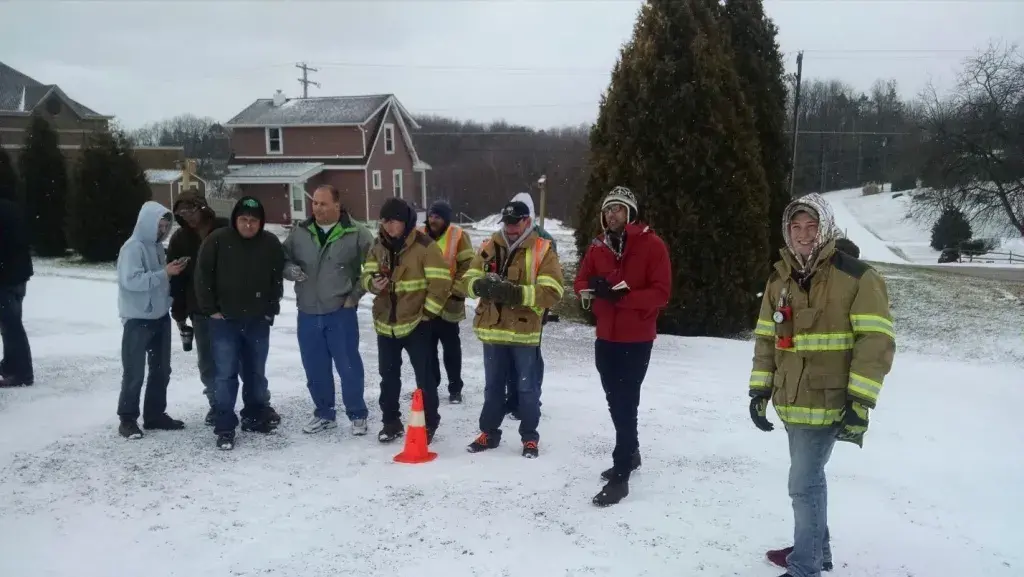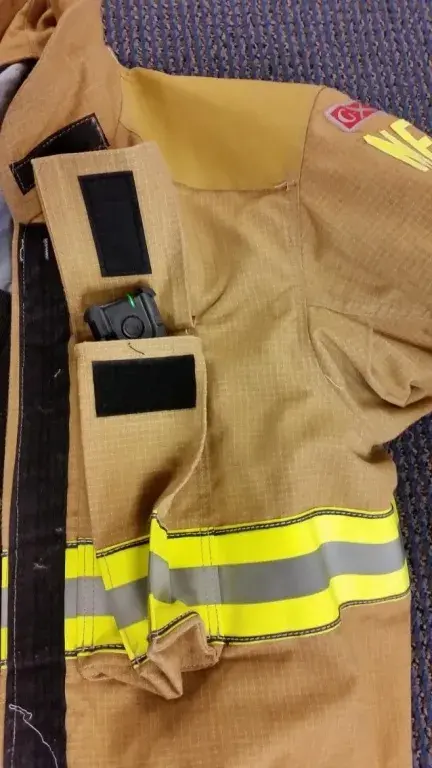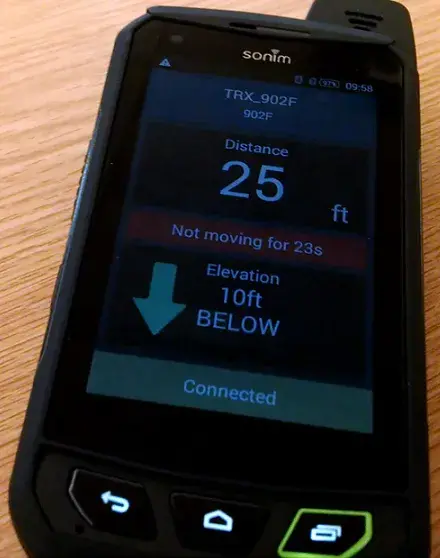The Department of Homeland Security’s (DHS) Science and Technology Directorate (S&T) recently put its Firefighter Accountability and Proximity System (FFAP) to the test in Pennsylvania with the help of the Herman Volunteer Fire Company (VFC).
Smoke, burning debris and intense heat dramatically increase the chances of a firefighter becoming disoriented and lost inside of a structure. Crawling, climbing and feeling their way through an inferno, firefighters are at high risk because standard GPS units are unable to track their locations within these types of dangerous situations. When separated from their team, a precious few seconds can make a world of difference in locating a lost or disoriented firefighter.
 In late January, S&T’s First Responders Group (FRG), alongside the National Urban Security Technology Laboratory (NUSTL), conducted an operational field assessment (OFA) of their Firefighter Accountability and Proximity System (FFAP) technology developed with commercial partner, TRX Systems. The FFAP beacon measures the relative distance and relative elevation between beacons worn by firefighters or other first responder personnel during dangerous emergency situations. The device is intended to improve team situational awareness and to aid in quickly finding lost or down firefighters inside a burning building.
In late January, S&T’s First Responders Group (FRG), alongside the National Urban Security Technology Laboratory (NUSTL), conducted an operational field assessment (OFA) of their Firefighter Accountability and Proximity System (FFAP) technology developed with commercial partner, TRX Systems. The FFAP beacon measures the relative distance and relative elevation between beacons worn by firefighters or other first responder personnel during dangerous emergency situations. The device is intended to improve team situational awareness and to aid in quickly finding lost or down firefighters inside a burning building.
Herman VFC Fire Chief and First Responder Resource Group member Rob McLafferty discussed the importance of what this means for firefighter safety, “Anything that can protect our firefighters could be a lifesaving tool. The FFAP System has some great features including the ability to provide relative elevation and proximity to other firefighters. It also tells us how long they have not been moving. Other firefighters or a Rapid Intervention Team (RIT) may be able to use this device and help locate the down firefighter during that critical period of time.”
Fire departments in small communities are often short on resources to help protect their firefighters. Participating firefighters agreed deployable and compact proximity device that is low cost and easy to field which could make a big difference in improving firefighter safety. “When you go into a house, you don’t know what’s going to be in there. The hallway could be full of debris or there could be a ceiling cave-in. This could help the RITs locate people,” Firefighter Larry Schuler explained after the assessment.
The proximity sensor relies on a method called “time of flight” to provide accurate distance measurement between itself and the other proximity sensors. A signal is sent back and forth at the speed of light between proximity sensors within range. The time the signal takes to travel between the proximity sensors is used to calculate the distance between the two sensors.
 “The proximity sensor also makes use of a technology known as ultra-wide band (UWB). UWB technology transmits information over a large spectrum bandwidth, 500 MHz or greater. UWB was chosen because it allowed for a more accurate measurement of distance and proved to be resistant to multipath induced errors,” NUSTL Team Evaluator Bhargav Patel said.
“The proximity sensor also makes use of a technology known as ultra-wide band (UWB). UWB technology transmits information over a large spectrum bandwidth, 500 MHz or greater. UWB was chosen because it allowed for a more accurate measurement of distance and proved to be resistant to multipath induced errors,” NUSTL Team Evaluator Bhargav Patel said.
FRG conducts OFAs to test technologies with the first responders who will actually use them in practice. The responders assess and evaluate performance in real life scenarios and provide feedback that is incorporated into the evaluation of the technology. This guides the next steps for commercialization and integration into self-contained breathing apparatus (SCBA) or operational procedures. The Herman county volunteer responders, based in Butler County, Pennsylvania (north of Pittsburgh), tested the FFAP’s features to help determine whether it is a viable solution for the nation’s first responder community.
The OFA testing consisted of two phases: Phase I - ranging performance assessment, and Phase II - operational testing. The FFAP system uses two separate components: the proximity sensor, which is worn or placed into the gear of the firefighter, and a user interface. TRX developed a prototype hand-held display that can run on a rugged smart phone or tablet, which was used in the OFA. An open interface is also available that will enable it to be easily integrated into displays on SCBA.
 In Phase I, after familiarizing themselves with the proximity system, the firefighters tested the accuracy of the system in outdoor ranging performance tests. Two personnel carrying proximity devices walked along a straight path away from the designated starting point, stopping at marked ten foot intervals. At each stopping point, the two team leaders at the starting point were able to compare the distance readings on the hand-held displays between each other and to the ground truth.
In Phase I, after familiarizing themselves with the proximity system, the firefighters tested the accuracy of the system in outdoor ranging performance tests. Two personnel carrying proximity devices walked along a straight path away from the designated starting point, stopping at marked ten foot intervals. At each stopping point, the two team leaders at the starting point were able to compare the distance readings on the hand-held displays between each other and to the ground truth.
During Phase II, an indoor scenario, participants evaluated the FFAP system in a simulated search and rescue of an unresponsive firefighter. Two participants hid within the Herman VFC building, and a RIT was sent in to locate them.
“We’re looking at this from a command situation. By making this as realistic as a simulation as we possibly can, this will allow us to find the strengths and weaknesses of this program. FFAP could be used in a search and rescue type situation, wildland fires or many other types of applications,” said McLafferty.
“The feedback received during the OFA will be implemented into the final FFAP design and then 100 production units will be built,” concluded S&T FRG Responder Technology Program Manager Christine Lee said.” FRG plans to distribute these 100 units to first response agencies to use in their operational environments for further feedback. Eventually, FFAPs will be integrated into SCBA equipment with the goal of helping firefighters carry out their work efficiently while staying safe.”
Watch the Firefighter Accountability and Proximity (FFAP) in 100 Seconds video:
For more information on the Firefighter Accountability and Proximity System, please contact first.responder@hq.dhs.gov.
